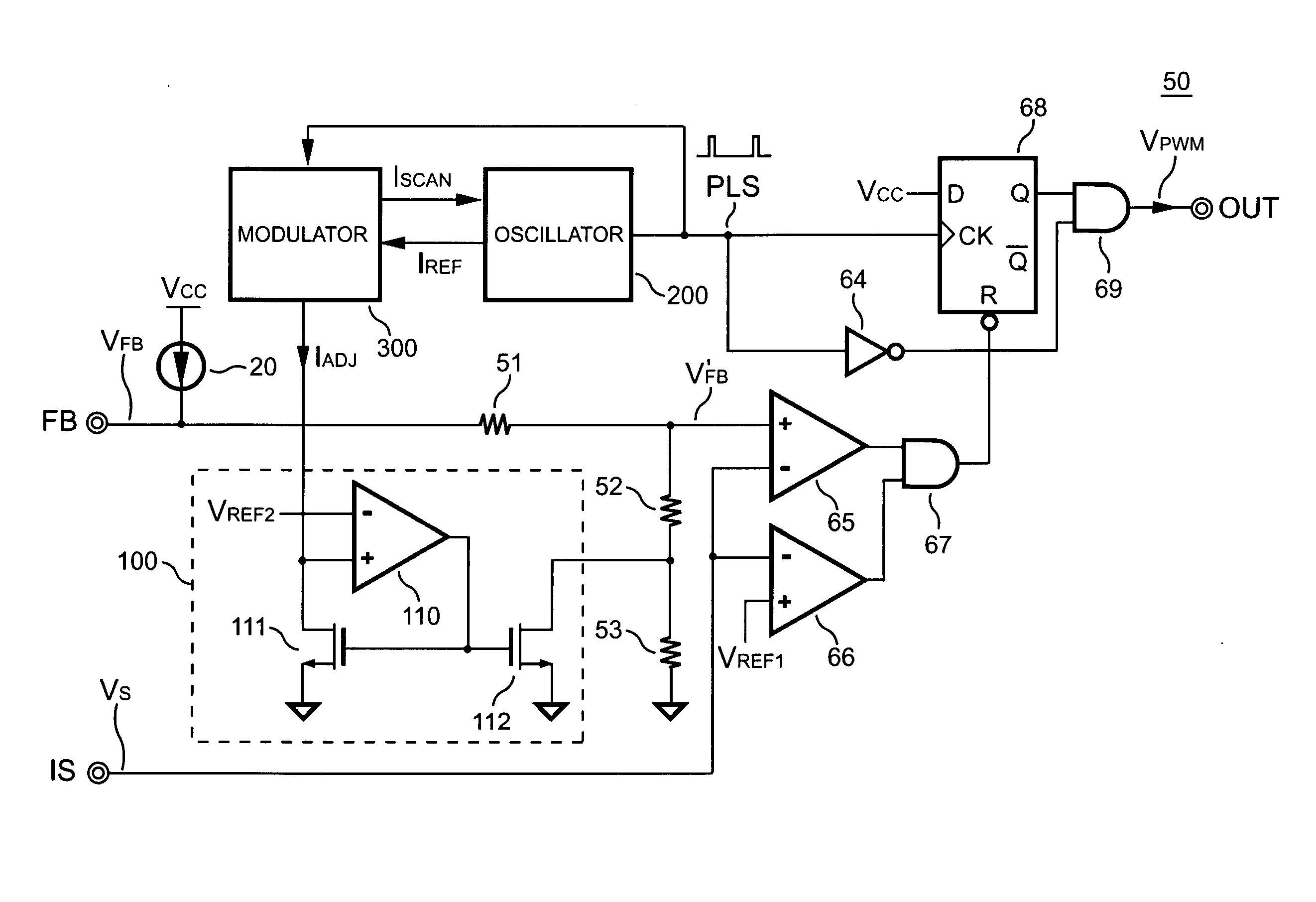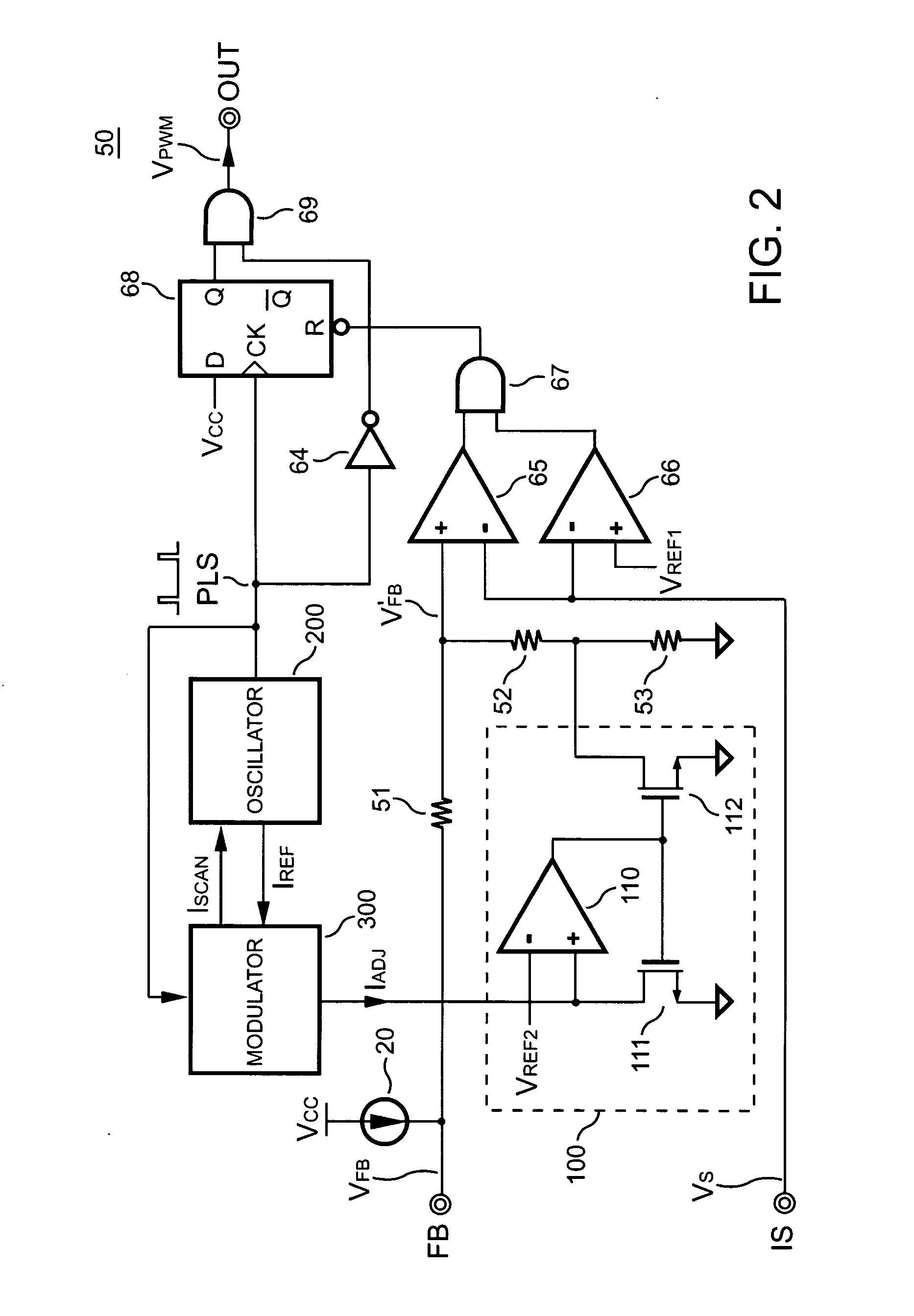PWM controller having frequency jitter for power supplies
a power supply and controller technology, applied in the field of power supply, can solve the problems of power consumption, power converter size reduction, switching device generating electric and magnetic interference (emi) that interferes with the power source, etc., and achieve the effect of reducing the impedance of the attenuator, reducing the attenuation rate, and eliminating undesired ripple signals
- Summary
- Abstract
- Description
- Claims
- Application Information
AI Technical Summary
Benefits of technology
Problems solved by technology
Method used
Image
Examples
Embodiment Construction
[0022]FIG. 2 is a circuit schematic of a PWM controller 50 having frequency jitter according to an embodiment of the present invention. The PWM controller 50 includes a modulator 300, an oscillator 200, a variable-resistance circuit 100, a first comparator 65 and a second comparator 66, a D flip-flop 68, an inverter 64, two AND gates 67, 69, and an attenuator formed by resistors 51, 52 and 53. In response to a pulse signal PLS and a reference current IREF generated by the oscillator 200, the modulator 300 generates a first jitter current ISCAN and a second jitter current IADJ. The first jitter current ISCAN is proportional to the second jitter current IADJ.
[0023] The first jitter current ISCAN and the second jitter current IADJ are in triangle waveform. The oscillator 200 generates the pulse signal PLS for determining a switching frequency in response to the modulation of the first jitter current ISCAN. The switching frequency increases whenever the first jitter current ISCAN incre...
PUM
 Login to View More
Login to View More Abstract
Description
Claims
Application Information
 Login to View More
Login to View More - R&D
- Intellectual Property
- Life Sciences
- Materials
- Tech Scout
- Unparalleled Data Quality
- Higher Quality Content
- 60% Fewer Hallucinations
Browse by: Latest US Patents, China's latest patents, Technical Efficacy Thesaurus, Application Domain, Technology Topic, Popular Technical Reports.
© 2025 PatSnap. All rights reserved.Legal|Privacy policy|Modern Slavery Act Transparency Statement|Sitemap|About US| Contact US: help@patsnap.com



